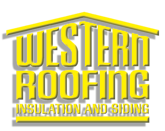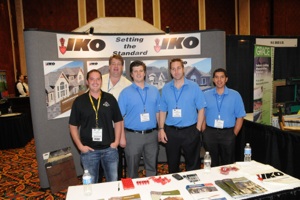Last June at the 2017 WRE Roofing Expo, the WSRCA's Low-Slope and Industry Issues Committees brought the Western roofing industry insightful findings from the testing and research of five different cartridge-grade low-rise roof adhesive products in the WSRCA Low-Rise Foam Adhesive Testing and Research Project.
As we learned, aside from application variables, not all low-rise foam adhesive products are the same, perform the same, nor do they provide evenly comparable uplift resistance to wind. Additionally, being prudent to keep an eye out for other issues that WSRCA members might need to be apprised of, the WSRCA Low-Slope Technical Committee, in conjunction with the WSRCA’s Industry Issues Committee discovered, in the process of performing the low-rise foam adhesive testing and research, a related issue pertaining to securing roofing components for appropriate wind-uplift resistance.
These WSRCA technical committees shared their concern with an apparently more recent development, but seemingly ongoing issue, of knit line irregularities voids, and partially unbonded facer material in polyisocyanurate rigid roof insulation. The issue was exposed during the 2017 WRE presentation of the WSRCA Low-Rise Foam Adhesive Research and Testing Project, as well as in the Industry Issues Committee’s contemporary work product, “Knit-line and Facer Irregularities in Rigid Polyisocyanurate Foam Roof Insulation Bulletin No. 2017-II-1.”
The WSRCA has shared their concerns with the Western roofing and waterproofing industry about knit-line attributed or caused irregularities, such as grooves on faces, voids and bridging of facers, varying R-values due to thickness irregularities, and significantly unbonded facer on rigid polyiso insulation. However, the manufacturing and distribution of these materials is apparently continuing. This realization is based on numerous WSRCA member contractors reporting the delivery of knit-line affected rigid polyiso insulation to their jobs.
As such, the WSRCA Industry Issues Committee went back to work on behalf of its members to produce a follow-up bulletin with firm recommendations to help contractors, designers, and member manufacturers to work together to prevent these deficient materials from being accidently accepted and installed on their projects. Please visit the WSRCA website to get a copy of the “Follow-up Alert Bulletin: Visible Knit-Line Affected & Facer Irregularities in Rigid Polyisocyanurate Foam Roof Insulation Bulletin No. 2018-II-1.”
This June 2018 at the Western Roofing Expo, the WSRCA Low-Slope and Industry Issues Committees, in joint effort, will present a discussion on emerging issues in roofing and waterproofing in the Western United States. Topics will include news regarding recent changes in low-rise foam adhesives, continuing developments in low-rise roofing, steep-slope underlayments, and opportunities with waterproofing in flood hazard zones, revealing research insights/findings pertaining to polymer-modified asphalt roll roofing, trends in asphalt shingle roofing, and changes in the code.
This year’s WSRCA technical presentation will be delivered by WSRCA’s Technical Advisory Section, as represented by Jim Carlson and Stephen Elliott. Carlson, with more than 40 years of intensive involvement in the roofing industry, is a nationally respected expert in the field of roofing, waterproofing, and exterior envelope systems, and longtime member and active participant of the WSRCA, and serves as the association’s technical advisor. Elliott is a senior roofing and waterproofing technologist outside of the WSRCA. He serves the WSRCA as a technical research and testing associate, and was the lead participant in the WSRCA’s “Low-Rise Foam Testing and Research Project” as well as the WSRCA’s groundbreaking “TPO and Underlayment Research and Testing Projects.” Additionally, Elliott was primary author, in-group effort, of the “WSRCA TPO Repair Guidelines Manual,” and contributing author on the “WSRCA Principles of a Successful Above-Grade Waterproofing Project,”and has authored and/or facilitated in the preparation of the work product for numerous different WSRCA technical and information bulletins. Together Carlson and Elliott will be bringing interesting and important insight into emerging issues in the industry where we all make our living serving building owners.














